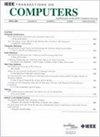基于意图驱动多播的多租户元空间信息共享
IF 3.8
2区 计算机科学
Q2 COMPUTER SCIENCE, HARDWARE & ARCHITECTURE
引用次数: 0
摘要
多租户虚拟世界允许公共虚拟世界中的多个用户在线交互。当用户和环境之间的交互通过交互式元空间(IM)服务多播给其他用户时,就会发生信息共享。然而,无效的信息共享策略加剧了用户之间对网络有限资源的竞争,并且无法解释用高级自然语言传达的优化意图提示,最终降低了用户的沉浸感。在本文中,我们探讨了具有时变资源容量和成本的多租户元环境中的可靠信息共享,其中IM服务是不可靠的,并且会改变它们处理的数据量,而服务提供商动态调整全局意图以最小化多播延迟和成本。为此,我们首先将信息共享问题表述为马尔可夫决策过程,并展示了其np -硬度。然后,我们提出了一种基于学习的系统GTP,该系统将近端策略优化强化学习与特征提取网络(包括图注意网络和门控循环单元)和用于多特征比较的Transformer编码器相结合,在不知道未来到达信息的情况下处理一系列传入的多播请求。GTP通过三个模块运行:一个在网络上分配主要和备份IM服务的部署器,以最小化服务器计算成本和用户与服务之间的通信距离的加权目标;一个意图提取器,动态地推断以自然语言传达的提供者意图;一个路由器,根据用户、提供者和网络约束构建按需多播路由树。最后对所提出的算法进行了理论和实证分析。实验结果表明,所提算法具有较好的应用前景,且优于现有的比较基线算法。本文章由计算机程序翻译,如有差异,请以英文原文为准。
Information Sharing in Multi-Tenant Metaverse via Intent-Driven Multicasting
A multi-tenant metaverse enables multiple users in a common virtual world to interact with each other online. Information sharing will occur when interactions between a user and the environment are multicast to other users by an interactive metaverse (IM) service. However, ineffective information-sharing strategies intensify competitions among users for limited resources in networks, and fail to interpret optimization intent prompts conveyed in high-level natural languages, ultimately diminishing user immersion. In this paper, we explore reliable information sharing in a multi-tenant metaverse with time-varying resource capacities and costs, where IM services are unreliable and alter the volumes of data processed by them, while the service provider dynamically adjusts global intent to minimize multicast delays and costs. To this end, we first formulate the information sharing problem as a Markov decision process and show its NP-hardness. Then, we propose a learning-based system GTP, which combines the proximal policy optimization reinforcement learning with feature extraction networks, including graph attention network and gated recurrent unit, and a Transformer encoder for multi-feature comparison to process a sequence of incoming multicast requests without the knowledge of future arrival information. The GTP operates through three modules: a deployer that allocates primary and backup IM services across the network to minimize a weighted goal of server computation costs and communication distances between users and services, an intent extractor that dynamically infers provider intent conveyed in natural language, and a router that constructs on-demand multicast routing trees adhering to users, the provider, and network constraints. We finally conduct theoretical and empirical analysis on the proposed algorithms for the system. Experimental results show that the proposed algorithms are promising, and superior to their comparison baseline algorithms.
求助全文
通过发布文献求助,成功后即可免费获取论文全文。
去求助
来源期刊

IEEE Transactions on Computers
工程技术-工程:电子与电气
CiteScore
6.60
自引率
5.40%
发文量
199
审稿时长
6.0 months
期刊介绍:
The IEEE Transactions on Computers is a monthly publication with a wide distribution to researchers, developers, technical managers, and educators in the computer field. It publishes papers on research in areas of current interest to the readers. These areas include, but are not limited to, the following: a) computer organizations and architectures; b) operating systems, software systems, and communication protocols; c) real-time systems and embedded systems; d) digital devices, computer components, and interconnection networks; e) specification, design, prototyping, and testing methods and tools; f) performance, fault tolerance, reliability, security, and testability; g) case studies and experimental and theoretical evaluations; and h) new and important applications and trends.
 求助内容:
求助内容: 应助结果提醒方式:
应助结果提醒方式:


